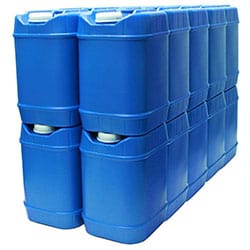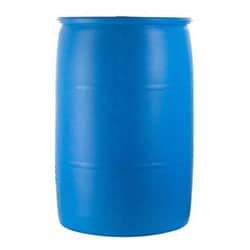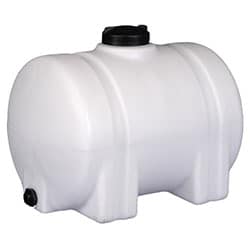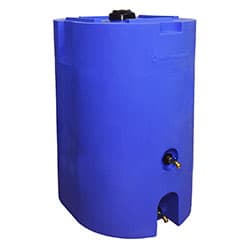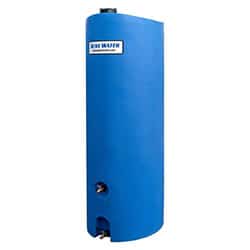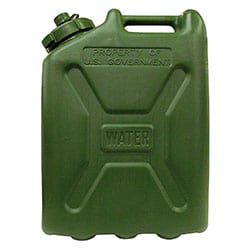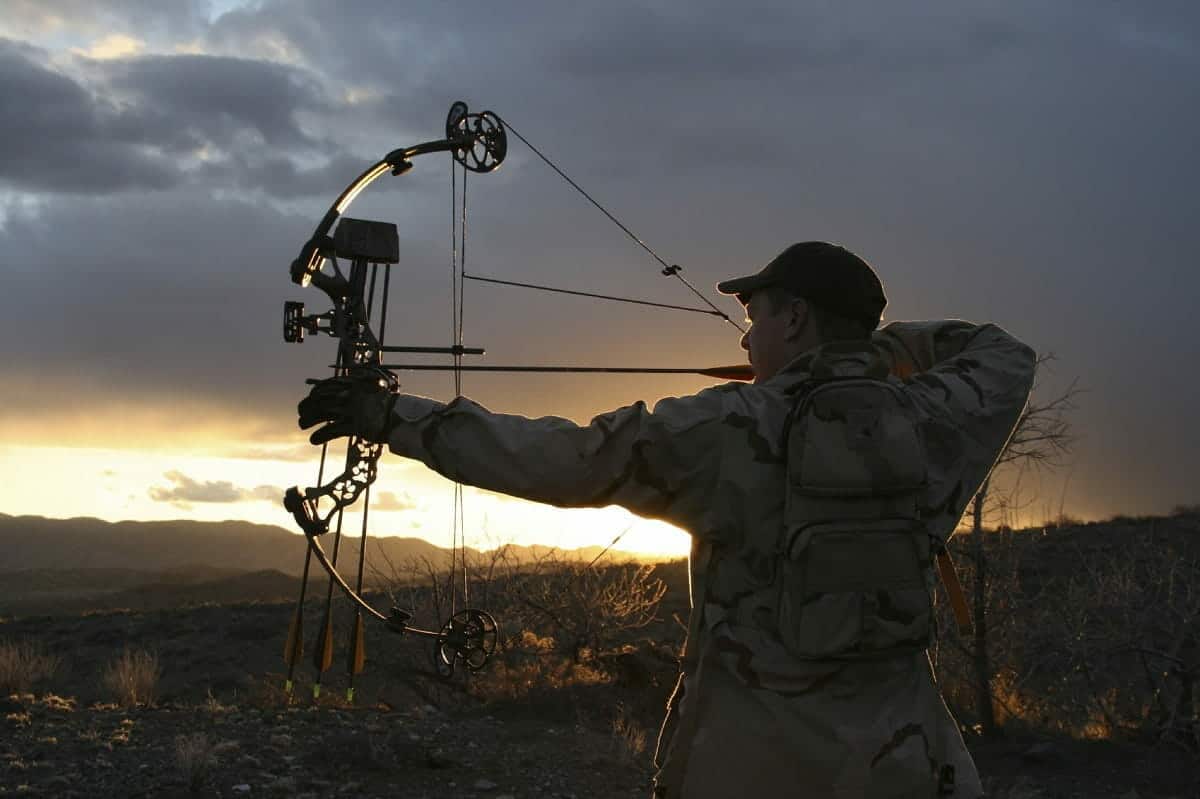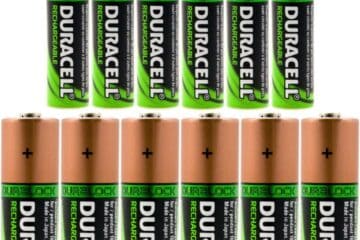Emergencies typically strike when we least expect it and can escalate quickly. One day you’re mowing the lawn in the sparkling sunshine. A couple of days later a hurricane is on top of you and you’re in a fight for survival. There’s no water to drink because the municipal supply has been contaminated and all the stores were sold out of water by the time you got there.
Roads are cut off, emergency services won’t reach your area for days and the kids need water. No one will ever claim that they planned to be the victim of a natural disaster. But if you’re not planning for success then your planning for failure. Water storage containers are an easy way to ensure your family’s wellbeing during an emergency. Below are the 10 best water storage containers on the market.
1. Reliance Products Aqua-Tainer 7 Gallon
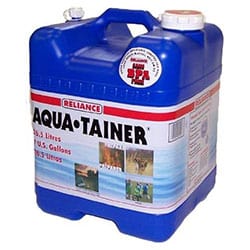
The Reliance Products Aqua-Tainer has a built in, hide-away spigot that make dispensing the water inside a simple act. It’s also impervious to UV light, has a screw-on vent to facilitate a smooth pour and is sturdy as the day is long. At 7 gallons it’s kind of an odd size.
Not really small enough for most people to carry around. Not really big enough by itself to provide much long term coverage for more than one person. But a few of these durable, affordable containers in the house should do the trick.
2. Saratoga Farms 5-Gallon Stackables
What we like about these right off the bat is that they’re stackable. Not containers that sometimes wind up stacked, but containers designed to be stacked. And that’s important for getting the most out of the area you set aside for emergency water storage. The fact that they are only 5 gallons each means they’re also portable. And that can be crucial if you’re forced to evacuate and don’t know when you’ll find drinking water again.
To that end they have a handle built into the top. They’re also easy to open so if the kids somehow find themselves on their own they can easily access the water. To put a nice fat cherry on the cake they’re also fashioned from high density polyethylene. Considered to be the best type of plastic for long-term water storage.
3. Legacy Premium 15 Gallon Water Storage Barrel
15 gallons of water should be enough to provide for one person for a couple of weeks. That’s the amount of time FEMA suggest you prepare for in the event of a disaster. So one of these for each member of the household should ensure everyone emerges on the other side intact. They’re fashioned from high density polyethylene and the plastic is opaque blue to prevent the intrusion of UV light, which could promote bacterial growth.
They’re well-built, sturdy and will no doubt last you a long time. If they have a downside it’s that you need one of those 55 gallon bung wrenches to open them. So, lose that during an emergency and you’ve got a problem. They’re also too big to be considered ‘portable’. At least if you’re on foot. Still, if you find yourself housebound during an emergency these should serve you well.
4. Emergency Essentials Water Barrel 55 Gallon
This 55 gallon water barrel provides enough water for a family of 4 for 2 weeks. That’s about a gallon a day per person. The barrel is fashioned from safe, durable high density polyethylene. Which experts claim to be the ideal plastic for long-term water storage. This is a standard 55 gallon drum that opens like a standard 55 gallon drum.
In other words, you need a bung wrench. While that’s not an ideal situation it shouldn’t be an issue as long as you keep said wrench secured somewhere near the barrel. This is not a portable barrel. But it is a good choice to have in case you find yourself housebound in the wake of a natural disaster. It’s also opaque blue which will inhibit penetration by UV light that could promote bacterial growth.
5. Norwesco 35 Gallon Horizontal Water Tank
The Norwesco 35 gallon horizontal water tank is great to have around the house in case of emergencies. It’s made of high-density polyethylene and has grooves built into the design that allow you to tie it down so that it doesn’t wind up blowing or floating away in the event of a hurricane or flood.
Being horizontally oriented you won’t have any trouble getting water out of it. And you can set it up under the workbench in the basement and forget about it until you need it. It has a nice solid feel to it that’s sometimes missing in vertically-oriented storage containers. But it’s not really portable. Unless you have a pickup.
6. Legacy Premium 160 Gallon Stackable Water Tank
This 160 gallon water storage container from Legacy premium can actually be stacked on top of another of the same containers to provide a couple of months worth of emergency water supplies for the whole family. They’re fashioned from UV-resistant high density polyethylene so they’ll prevent your water from being contaminated and hold it safely for years on end.
They come with a 330 gallon water treatment kit, connector valves and spigots. And, perhaps unique to this type of storage container, they’re rated to -40 Fahrenheit. With a couple of these as the centerpiece of your emergency water strategy you’re good for the long-haul.
7. Surewater 260 Gallon Emergency Water Storage Tank
If you have a large household and live in an area prone to hurricanes or flooding you know the importance of keeping potable water on hand. This Surewater 260 gallon tank is enough to provide for the needs of 10 people for nearly 2 weeks.
It’s a big, sturdy tank fashioned from BPA free food-grade plastic and comes with a water purification kit and a 50’ hose. Tuck this puppy away in the basement and you’re ready for nearly any eventuality. Keep a number of smaller containers handy and you can fill them from this one if you have to evacuate.
8. iSpring T32M 4 Gallon Water Storage Tank
This 3.2 gallon water storage container from iSpring is just the right size to fit neatly under the sink. This is the Cadillac of water storage containers in that it’s pressurized and the water stays fresh via the process of reverse osmosis.
It may seem a bit precious for an emergency water storage unit but it gets the job done. At least to a limited degree. If you live alone and just want to be sure you’re never caught short in the event of an earthquake, flood or other disaster having one of these around is a good idea. It has the added benefit of being very affordably priced.
9. LCI Plastic Water Can 5 Gallon
The LCI Plastic Water Can is the ultimate in low tech, old-school water storage technology. This is the same design that’s been used by the army to supply water to troops in the field for decades. And one reason the military has been and remains sold on this design is because it’s very easy to transport with a slender profile that allows it to be carried comfortably at your side.
It’s also very easy to use, with a simple screw on cap that a child could easily open. And it has a venting cap that allows for nice smooth pouring. The handle is large and comfortable, it’s made from BPA free, food-grade plastic and it can be had for pretty short money.
10. RomoTech Horizontal 125 Gallon
We wrap up our list with this 125 gallon horizontal water storage tank from RomoTech. This tank is fashioned from heavy duty polyethylene, considered the best for water storage. It has a 10 inch drainage lid that makes for easy filling and fill marks indicated in both gallons and liters are molded into the body of the tank.
There are 2 molded-in channels to secure it with straps and the low profile will make it easy to fit in vertically-challenged spaces. Just be aware that it’s heavy when full. So you’ll need a rock solid base to place it on.
FAQs
Who Needs a Water Storage Container?
If you’ve ever watched any story on TV or read one on the internet about an approaching hurricane you’ve heard the tales of local stores running out of water (1). This indicates something fundamental about a lot of us: we have a tendency to let things slide until the last minute (2), and then it’s often too late. When it comes to water, however, there is no middle ground. We need it to live, period (3).
Whether you’re faced with the imminent arrival of a colossal hurricane or live in an area prone to twisters, floods, blizzards or more the smart approach is to always have a supply of potable water on hand in case things take a turn for the worse. You don’t want to be that person who arrives at the store only to find empty shelves staring back at you. So who needs a water storage container? Anyone who prefers being prepared to scrambling around at the last minute trying to piece together a survival strategy.
Does Water Go Bad?
No one is quite sure where this myth came from. But it might have something to do with bottles. As in, as soon as you put something in a bottle people naturally assume it can go bad. Like orange juice or chocolate milk. But water isn’t like a manmade beverage. It has no expiration date. In fact, it’s estimated that the water you drink every day is more than 4 billion years old. Some of earth’s water may be older than the planet itself (4). It’s possible for pollutants introduced into the water to foul it, but left to its own devices water doesn’t go bad. Ever. So the trick is to find a way to store it where it won’t be compromised.
Can You Store Water in Any Old Plastic Bottle?
The tendency is to think ‘plastic is plastic’. But it’s not. PVC plastics (5) can leach toxins into water over time. Not good. Polystyrene (6) is sometimes used by take out joints to hold drinks but it too can leach toxins into whatever beverage it’s holding. It’s also an environmental nightmare. If you’re looking for a safe type of plastic into which you can place potable water for the long term you should be looking for High Density Polyethylene (7) or HDPE. It’s the safest type of plastic to store water in.
Polypropylene (8) will also work. That’s the stuff that margarine tubs are made of. Less desirable but still useful is low-density polyethylene (9). This stuff is okay in a pinch but isn’t typically recommended for water storage since there are other, better options available. Also, remember that while it may be tempting to store water in old soda bottles, plastic has the ability to absorb flavors. So your water could wind up tasting line Mountain Dew or Coke.
Is One Large Water Barrel Enough?
Thinking that having one big barrel of water is a good strategy is like thinking that if you have a million bucks in the bank you’re set for any eventuality. What if the power goes out for days due to a hurricane and you’re isolated with no access to that cash?
It won’t do you much good then. You need to have a smaller amount of cash stashed in the house, just in case (10). Same thing with water. It’s nice to have a big barrel of emergency water but what good is it if you have to evacuate? The key is not putting all your eggs in one basket. If you have a large water storage container then make sure you also have numerous smaller ones available that you can fill from the large tank and take with you if you have to move.
What Should I Look for in a Water Storage Container?
Durability
Remember, it might be years before you actually have reason to use your emergency water supply. As such, the container or containers need to be built to last. It’s also possible that they’ll be exposed to nature’s wrath at some point – perhaps if the house is breached during a hurricane or flood. (This is another reason it pays to have more than one water storage container. That way if one is broken or swept away you have others you can rely on.)
The fact is, water containers are like pretty much everything else: you get what you pay for. Sure, you can probably find a mid-sized $20 container that will hold up for a year or two in the basement. But it’s also likely that, when those two years pass, you’ll start to see cracks.
Appropriateness
Make sure you get a water storage container that fits in with your plan for using/storing it. If you plan on having several small to mid-sized containers it’s probably a good idea if they are stackable. But they need to be made for stacking or the weight of the water on the top containers will crush the bottom containers. Also, don’t buy a ‘bladder’ style container unless you have some specific need for it.
The bottom line is to buy a water storage container that is appropriate for your intended use and that will make the most of the storage space you have dedicated to it. Keep in mind too that conical containers that dispense water from the bottom may be easy to use but they waste a lot of space. And if they get knocked over they could burst.
Simplicity
If half your home was just blown away by a hurricane or washed away in a flood you don’t want to find yourself fumbling with the emergency water storage unit. And that could happen if you buy one that requires a special tool to open or has a proprietary spigot that needs to be installed before you can remove any water. Remember too that, should the adults perish during a disaster (it happens) the children may be faced with a survival situation and will need quick, easy access to water. So if you have young children, it’s imperative that you consider them when choosing an emergency water storage container or containers.
Materials
Plastic is by far the most popular material for emergency water storage today. And we already touched on the different types of plastic for this job. So we’re not going to rehash it here. Just take a look at the question “Can you store water in any old plastic bottle?” above.
Size
This is a crucial concern. According to FEMA (11) a typical person needs one gallon of water per day. This is, of course, a ‘best of all possible worlds’ scenario. Because people can survive (that’s ‘survive’ not ‘thrive’) on far, far less. However, we’ll use FEMA’s best of all possible worlds scenario because we’re optimists.
So in that case, assuming a two week period without access to clean water you’ll need to have 14 gallons of water per person stored away in a safe container. That’s 56 gallons for a family of 4. And of course that doesn’t include things like bathing or washing clothes. Now keep in mind that you and your family may be forced to move. How are you going to take the water with you if it’s all in a single 55 gallon drum? So you’ll need to either have the water stored in smaller containers or have portable containers ready in case you need them.
What’s the Best Way to Clean a Water Storage Container?
It’s not wise to buy a water storage container of any kind and just fill it with water as soon as you get it home. You don’t know what type of microbes are milling around inside or what type of pollutants it picked up at the factory or while being stored in the warehouse. So disinfecting the container is a must before you actually use it. Here’s how that is typically done on a 5 gallon water storage container.
- Wash out the inside with standard dishwashing soap and water and rinse thoroughly.
- Add a teaspoon of bleach to a quart of water and pour it into the container. Don’t worry, you’d have to drink bleach right from the bottle for it to be a hazard (12).
- Make sure the cover is on tightly then shake it vigorously for 10 to 20 seconds.
- Let it sit for an additional 30 seconds.
- Pour out the water and then let the container air dry before pouring clean water into the container and sealing it tightly.
Make sure to do this in a clean environment to reduce the odds of more microbes settling into the container while it dries.
The Bottom Line
We all tend to take water for granted until faced with the possibility of being without it. It doesn’t take much for municipal water supplies to be contaminated during a hurricane or flood. And once that happens you need a way to get by until things are set right. The best way to ensure you’re not caught short during an emergency is to have a reasonable amount of potable water on hand at all times, just in case. And the best way to do that is to have an emergency water storage container or containers in the home at all times. You may never use them. Then again, there may come a time when that stored water makes the difference between life and death.
